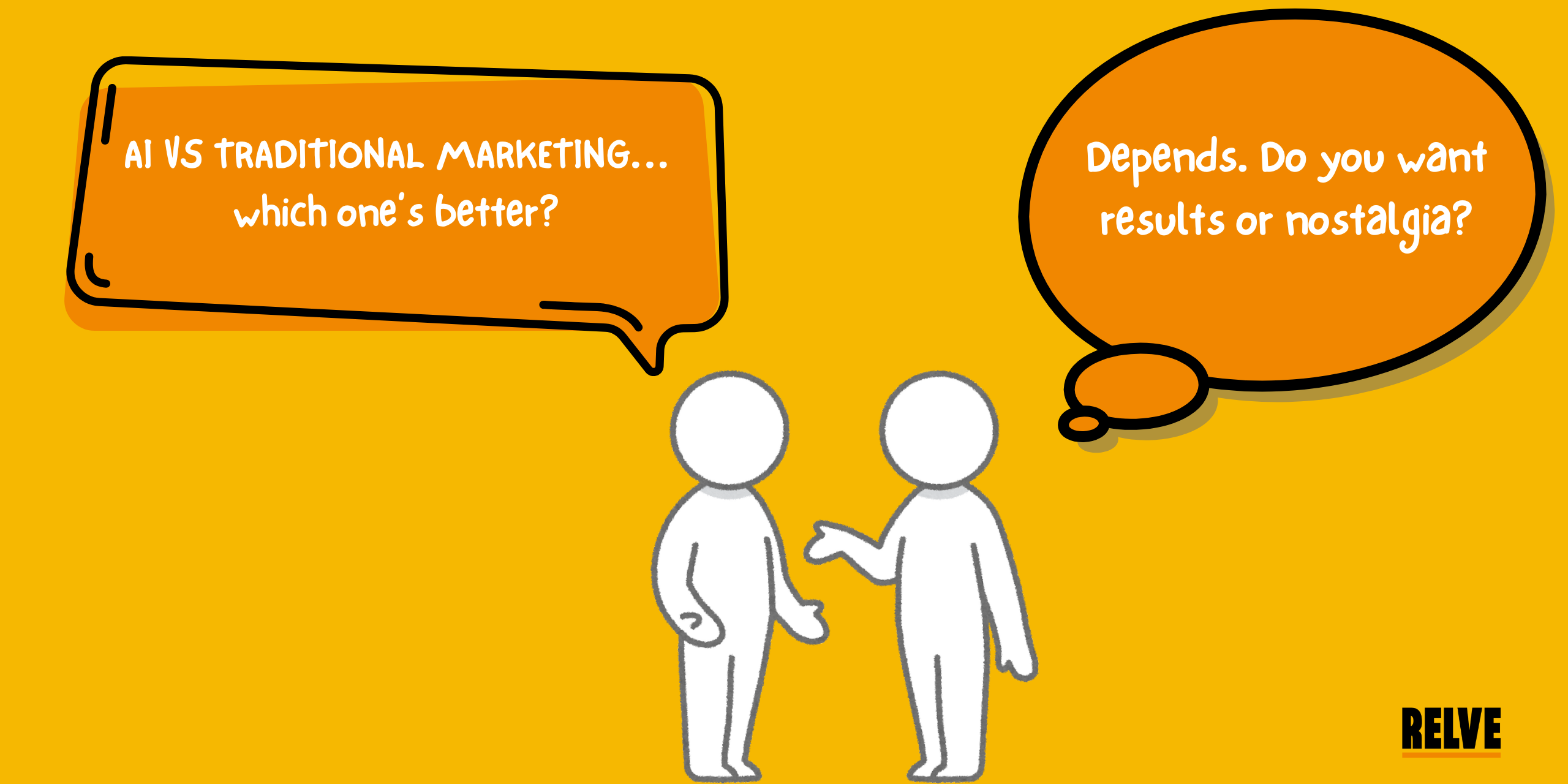Chief Marketing Officers (CMOs) are at a pivotal crossroads. Amid tighter budgets and increasing pressure to deliver measurable results, the decision to rely on traditional digital strategies or pivot toward AI-driven marketing is more pressing than ever. The debate of AI vs traditional marketing isn’t just a matter of budget allocation – it’s about shaping the future of your brand and customer engagement.
If you’re a CMO facing internal board pressure or grappling with declining campaign ROI, this blog will guide you through the landscape, break down the pros and cons of both approaches, and outline the next steps you should take.
Understanding the Landscape: Traditional vs AI Marketing
Before making a strategic shift, it’s critical to understand what both traditional marketing and AI marketing entail.
Traditional Digital Marketing
Traditional marketing includes everything from email marketing, SEO, PPC campaigns, social media management, to influencer marketing—all driven by human insight, manual analysis, and historical data trends.
AI-Powered Marketing
AI marketing solutions leverage artificial intelligence to automate, optimize, and personalize every facet of the customer journey—from predictive analytics and real-time personalization to chatbot-driven customer support and automated content creation.
In fact, 84% of marketers are already using AI in some capacity. The momentum is undeniable.
How AI Has Changed the Game
Marketing used to rely heavily on intuition, experience, and A/B testing. With the advent of AI for marketing, brands can now:
- Predict user behavior before it happens
- Personalize emails and content dynamically at scale
- Generate thousands of ad variants in minutes
- Analyze sentiment and trends in real time
- Optimize budgets automatically across platforms
🧠 Data Processing
AI now processes millions of data points in seconds — fueling smarter, faster insights.
🎯 Hyper-Personalization
From static segments to real-time 1:1 messaging tailored by user behavior and intent.
✍️ Content Automation
AI tools generate blog posts, emails, and ad copy — reducing production time drastically.
📊 Predictive Analytics
CMOs now anticipate customer needs and churn risk using predictive models.
🤖 Conversational AI
AI chatbots and voice assistants are replacing generic FAQs with dynamic dialogue.
Let’s break this down further:
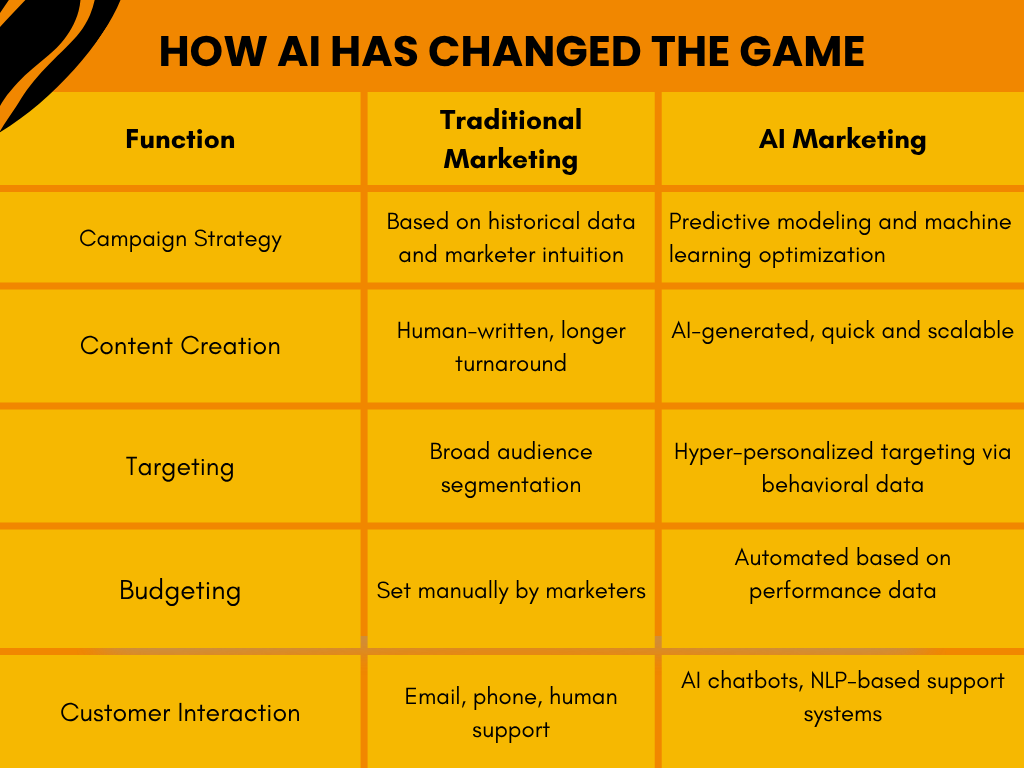
There are several reasons how AI marketing tools can help you scale and automate your strategy.
Advantages of AI vs Traditional Marketing Approaches
Let’s break down where each approach shines.
With AI marketing:
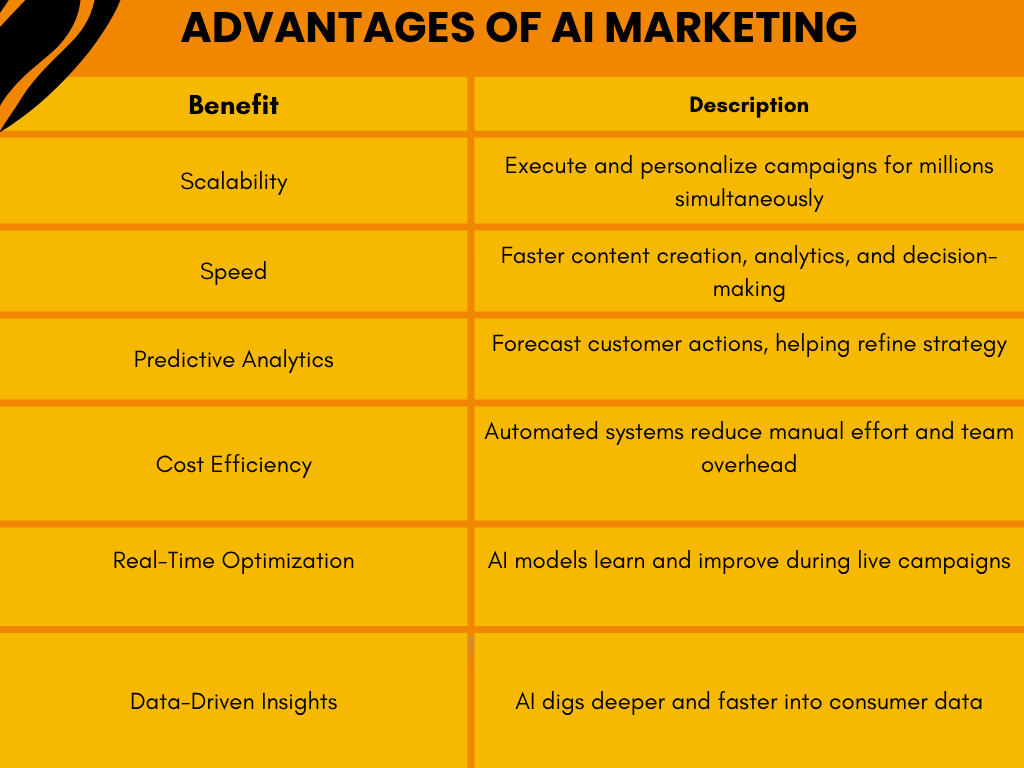
As for traditional marketing, it does some things very well:
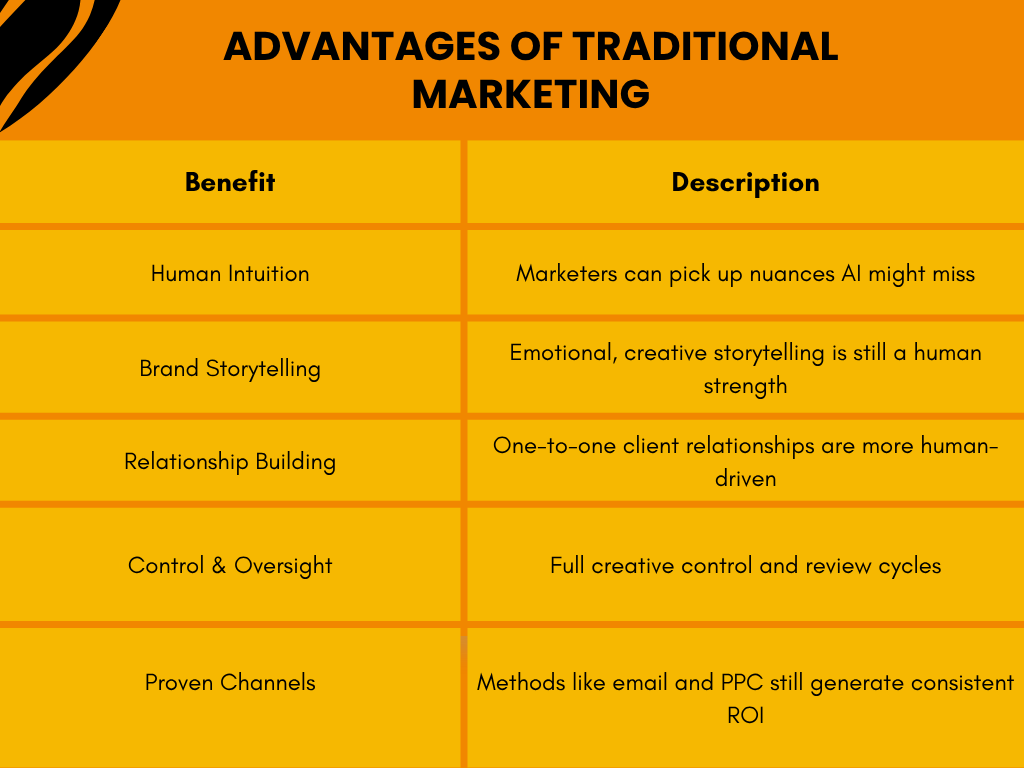
Disadvantages of AI and Traditional Marketing
Both these approaches are not without their flaws.
With AI marketing, you need to be mindful of certain things:
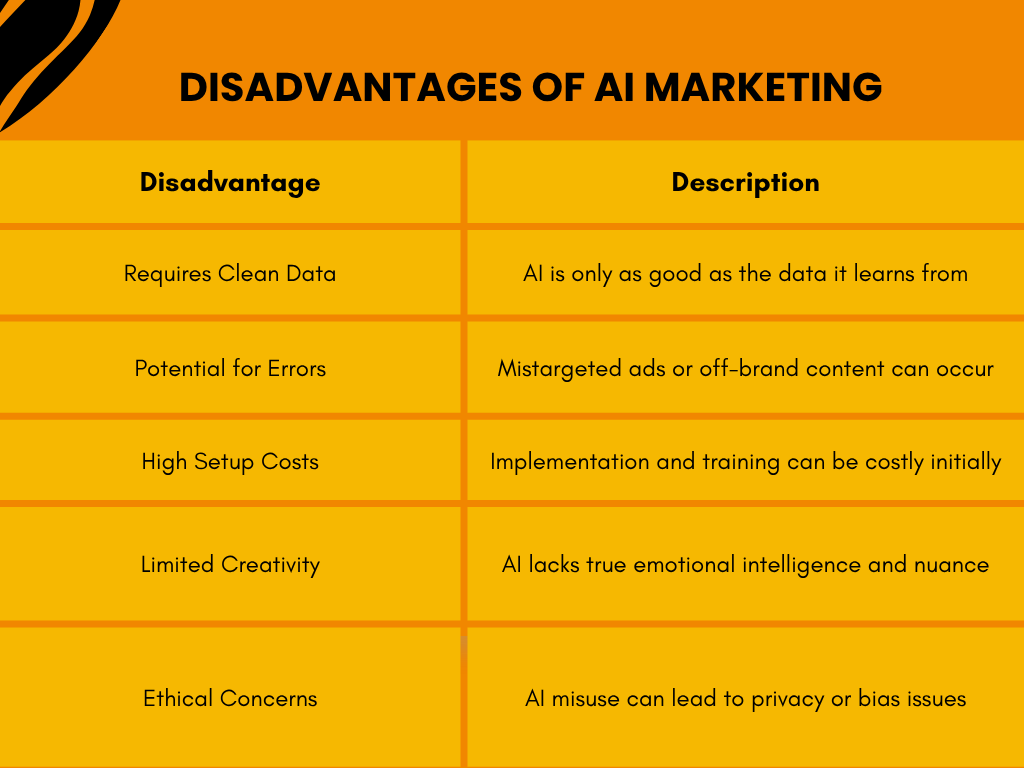
Traditional marketing has its drawbacks as well:
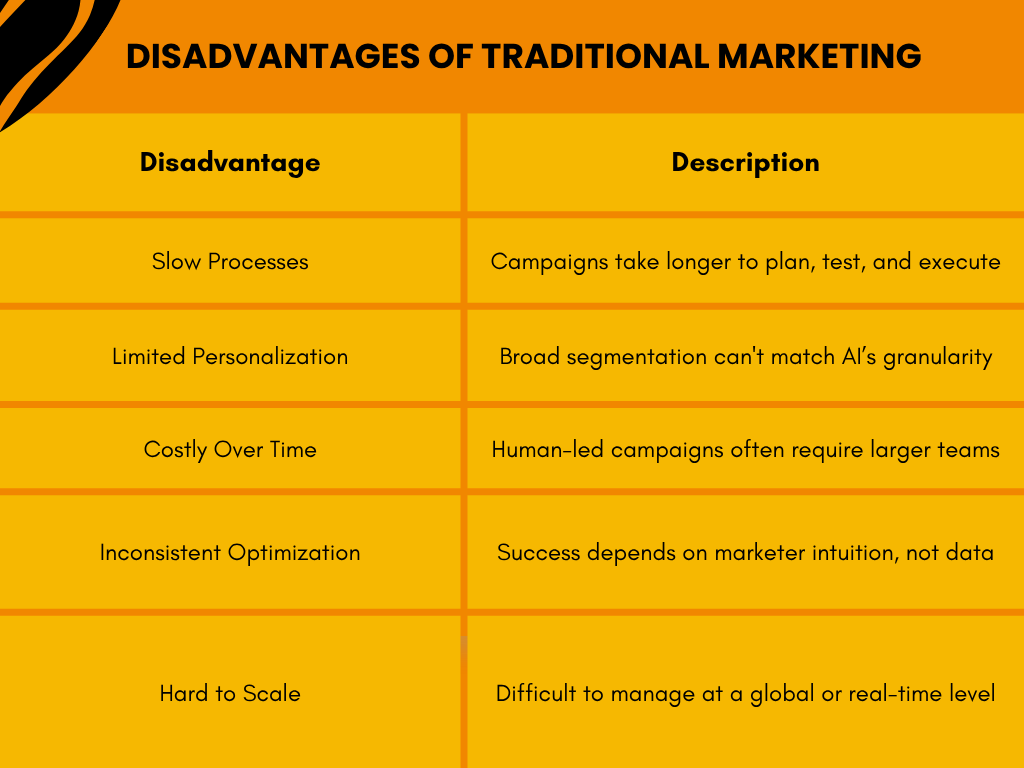
- Boosts productivity with automation
- Improves decision-making with data insights
- Reduces repetitive manual work
- Initial setup can be time-consuming
- Requires technical knowledge for advanced use
- Potential over-reliance on AI-generated content
Despite those limitations, avoiding common AI marketing mistakes can help you sidestep these challenges.
The Blended Approach: Using AI to Augment Traditional Marketing
The reality is this: it’s not an either-or decision. The most successful CMOs are integrating AI into their traditional marketing stack and optimizing outcomes.
Take a traditional content team. You can look at real-world examples of AI marketing success stories from brands like Netflix, Coca-Cola, and Spotify to see this approach in action.
Instead of manually creating 50 variations of ad copy, the creative strategist can guide an AI tool like Jasper or Copy.ai to generate multiple versions in minutes, which are then curated by humans for tone and consistency.
Or consider media buying platforms like Meta and Google Ads that now use AI-driven algorithms by default. A savvy marketer doesn’t need to abandon their strategy, they just augment it with AI recommendations and A/B testing at scale.
CMO Priorities in the Age of AI Marketing
So, what’s the path forward? CMOs can look into doing these things:
1. Audit Your MarTech Stack
Map out your current tools and workflows. Identify gaps where automation or data insights could save time and boost performance.
2. Upskill Your Team
AI literacy is becoming non-negotiable. Upskilling your marketers in prompt engineering, data interpretation, and the ethical use of AI is now a strategic necessity.
3. Set Governance Standards
To address concerns about privacy and brand integrity, define clear policies on how AI tools are used. Transparency with your customers matters.
4. Experiment, Then Scale
Don’t overhaul everything overnight. Run AI pilot campaigns alongside traditional efforts, and measure ROI. Once the data supports it, scale your AI integrations.
5. Prioritize Personalization
AI thrives on data. But CMOs must push for personalization with empathy. Use AI to understand the “what” and “when,” but let your team dictate the “why.”
Future-Proofing: Where AI Marketing Is Headed
Over the next few years, we’ll see:
- AI for marketing embedded in CRMs, CMSs, and ad platforms by default
- A shift from campaign-centric to journey-centric strategies
- Conversational commerce through AI avatars and chat interfaces
- More explainable AI models that improve transparency and control
The benefits of AI in marketing will only amplify, but only if leadership steers adoption with purpose.
- Audit your marketing stack for AI opportunities
- Invest in AI-literate talent & training
- Integrate AI tools for content & campaign automation
- Shift KPIs toward real-time, predictive metrics
- Build ethics + governance around AI decision-making
Final Thoughts: What CMOs Need to Do Next
Navigating the divide between AI vs traditional marketing isn’t about replacing people with machines. It’s about empowering your marketing function with tools that enhance creativity, decision-making, and results.
The most future-ready CMOs aren’t just investing in technology; they’re also leveraging it. They’re building hybrid teams, establishing robust governance frameworks, and fostering a culture of experimentation. You may also want to consider the growing debate between AI generalists and specialists when shaping your team.
So before you swing the pendulum in either direction, ask:
- Where can AI genuinely drive performance?
- Where does human ingenuity still reign?
- And how can both coexist to deliver a marketing engine that’s as agile as it is impactful?
The marketing battlefield is evolving. But with the right blend of strategy, tools, and talent, CMOs can lead the charge – and win.
